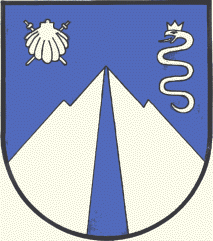Gallizien: Difference between revisions
Jump to navigation
Jump to search
Knorrepoes (talk | contribs) m (Text replace - "'''Origin/meaning :'''<br>" to "====Origin/meaning====") |
Knorrepoes (talk | contribs) No edit summary |
||
| (20 intermediate revisions by the same user not shown) | |||
| Line 1: | Line 1: | ||
{| | {| class="wikitable" | ||
|- style="vertical-align:top;" | |||
| | |[[File:gallizien.gif|center|300 px|alt=Wappen von {{PAGENAME}}/Arms (crest) of {{PAGENAME}}]] | ||
| | |||
<center>''' {{uc:{{PAGENAME}}}} '''</center><br> | |||
'''Country''' : Austria [[File:Austria.jpg|60 px|right]]<br><br><br> | |||
'''State''' : [[Kärnten]][[File:Karnten.jpg|60 px|right]]<br><br><br> | |||
'''District ''' : Völkermarkt | |||
{{#display_map:46.5582,14.5070|width=250|height=250|zoom=7}} | |||
|} | |} | ||
''' | {| class="wikitable" | ||
|+Official blazon | |||
|- | |||
|'''German''' | |||
| blazon wanted | |||
|- | |||
|'''English''' | |||
| blazon wanted | |||
|} | |||
===Origin/meaning=== | |||
The arms were officially granted on January 10, 1986. | |||
The village changed its name, after the local church was gifted with relics of the Holy Apostle St. James the Elder (Jacobus Maior), who is buried at Santiago de Compostela in Galicia (north-western Spain). In the Middle Ages, Santiago was a place of pilgrimage and has remained so to this day. Hence the escallop and the pilgrim's staffs in the arms. | |||
The main charge of the arms symbolize the Wildenstein falls (52 metres high). The crowned snake is taken from local folklore. | |||
[[Civic Heraldry Literature - Austria|Literature]] : Image provided by Karl Palfrader (k.palfrader@aon.at) | |||
{{at}} | |||
{{media}} | |||
[[Category:Austrian Municipalities G]] | [[Category:Austrian Municipalities G]] | ||
[[Category:Kärnten]] | [[Category:Kärnten]] | ||
[[Category:Völkermarkt]] | [[Category:Völkermarkt]] | ||
[[Category:Granted 1986]] | [[Category:Granted 1986]] | ||
Latest revision as of 07:42, 1 August 2023
|
Country : Austria State : Kärnten District : Völkermarkt |
| German | blazon wanted |
| English | blazon wanted |
Origin/meaning
The arms were officially granted on January 10, 1986.
The village changed its name, after the local church was gifted with relics of the Holy Apostle St. James the Elder (Jacobus Maior), who is buried at Santiago de Compostela in Galicia (north-western Spain). In the Middle Ages, Santiago was a place of pilgrimage and has remained so to this day. Hence the escallop and the pilgrim's staffs in the arms.
The main charge of the arms symbolize the Wildenstein falls (52 metres high). The crowned snake is taken from local folklore.
Literature : Image provided by Karl Palfrader (k.palfrader@aon.at)
| Heraldry of the World Wappen der Welt |
| Austrian heraldry portal Österreichische Wappen |
|
Contact and Support
Partners:
Your logo here ?
Contact us
© since 1995, Heraldry of the World, Ralf Hartemink 
Index of the site















